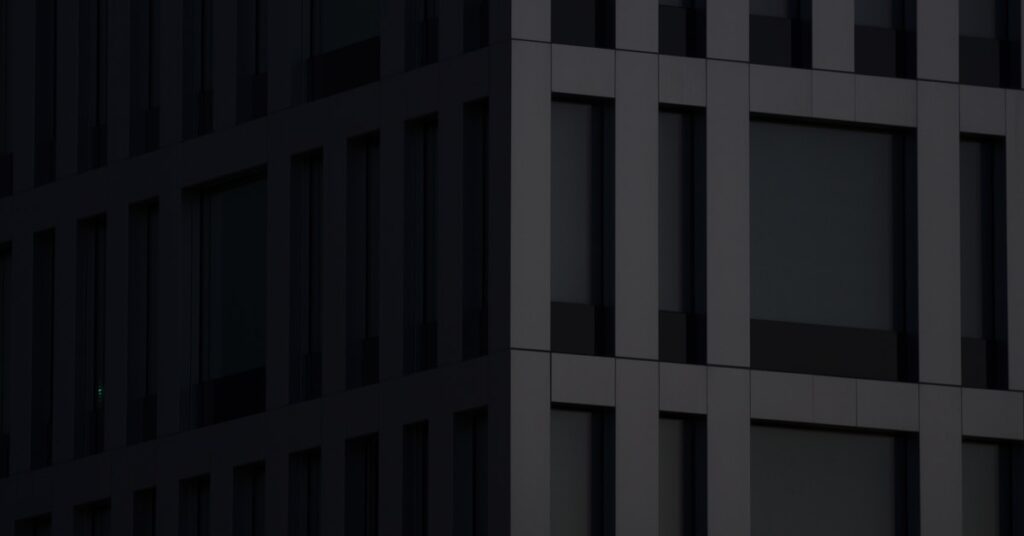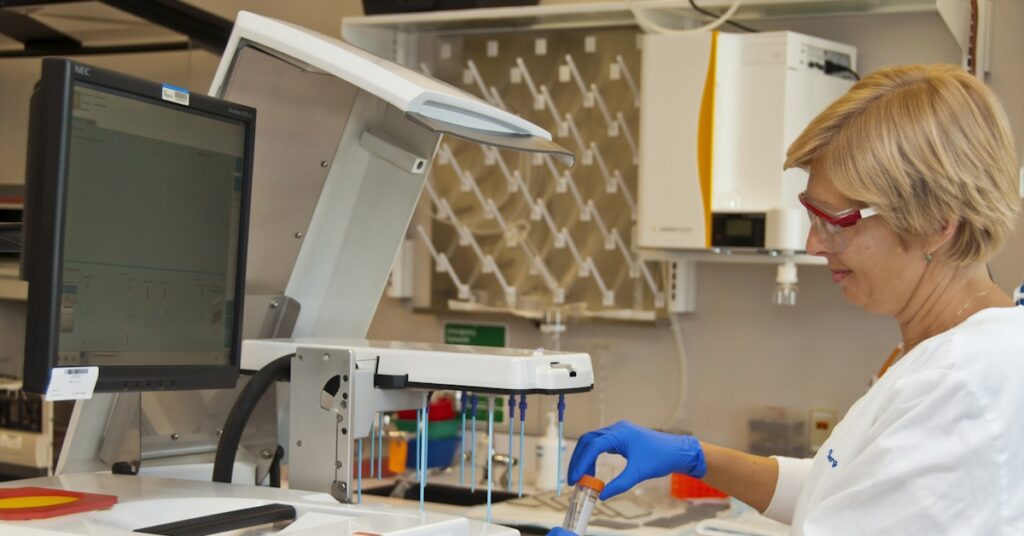Struggling to render visuals fast enough?
You spend countless hours on rendering, only for project deadlines to creep up. This bottleneck slows down your entire creative workflow and client approvals.
The worst part is compromising your artistic vision because your current tools just can’t keep up. It’s frustrating when technology limits your creativity.
Many creative agencies find themselves in this exact position. They invest in powerful modeling software but get stuck with rendering pipelines that cause project delays and budget overruns.
While we’re discussing optimizing your business processes, my guide on best event marketing software covers how to boost attendance and ROI.
But what if you could find software that delivers both speed and photorealism? The right tool can streamline your entire workflow.
In this guide, I’ve done the heavy lifting for you. I’ll break down the best 3D rendering software to help you produce amazing visuals without the wait.
You’ll discover options that integrate with your existing tools, fit your budget, and help you deliver projects faster than ever before.
Let’s find your perfect match.
Quick Summary:
| # | Software | Rating | Best For |
|---|---|---|---|
| 1 | Autodesk → | Mid-sized creative agencies | |
| 2 | Blender → | Budget-conscious teams | |
| 3 | Chaos → | Creative agencies & design teams | |
| 4 | Enscape → | Architects & designers | |
| 5 | KeyShot → | Product design teams |
1. Autodesk
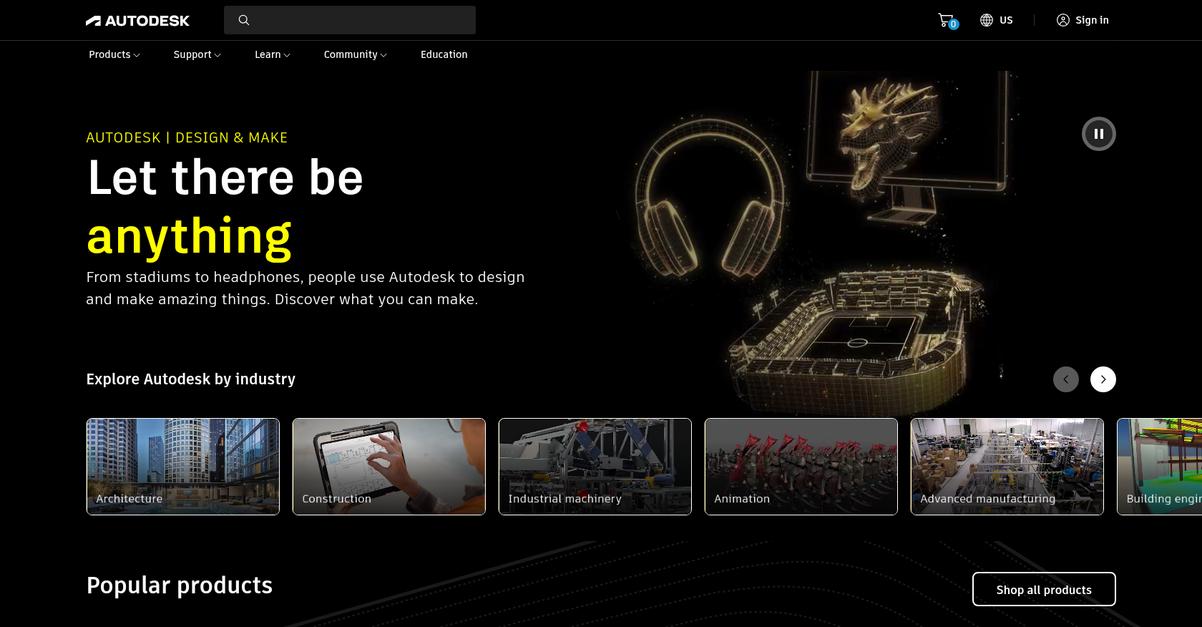
Struggling to find the right 3D rendering software?
Autodesk offers tools for design, make, and media and entertainment, addressing diverse industry needs. This means you can create anything from buildings to products and visual effects.
Their capabilities help you make anything, from the smallest to the largest projects, simplifying complex workflows. This is how you conquer information overload.
Discover solutions that deliver.
Autodesk’s software helps you design, simulate, and analyze, supporting faster iterations and better decisions. You can explore designs in 3D, enhancing collaboration across teams.
Their core strength lies in connecting your data, teams, and workflows, ensuring seamless integration with existing modeling platforms. Plus, it helps simplify data handoffs, fostering a collaborative environment to maintain productivity. Additionally, they provide insights from their community to help you innovate, helping you identify solutions that align with your project demands.
This ensures consistent output quality.
Key features:
- Comprehensive design tools: Facilitates the design, simulation, and analysis of diverse projects, enabling faster iteration and better decision-making for product and architectural visualizations.
- Integrated workflows: Connects your data, teams, and processes across a unified platform, ensuring seamless collaboration and compatibility with your existing modeling tools.
- Industry-specific solutions: Offers specialized software tailored for architecture, engineering, construction, product design, manufacturing, and media and entertainment, meeting specific project demands.
Learn more about Autodesk features, pricing, & alternatives →
Verdict: Autodesk provides a robust suite of tools that make it a strong contender for the best 3D rendering software, especially for mid-sized creative agencies. Its focus on connecting workflows and supporting diverse industries helps teams achieve photorealistic visuals and optimize project outcomes, alleviating concerns about integration and training.
2. Blender
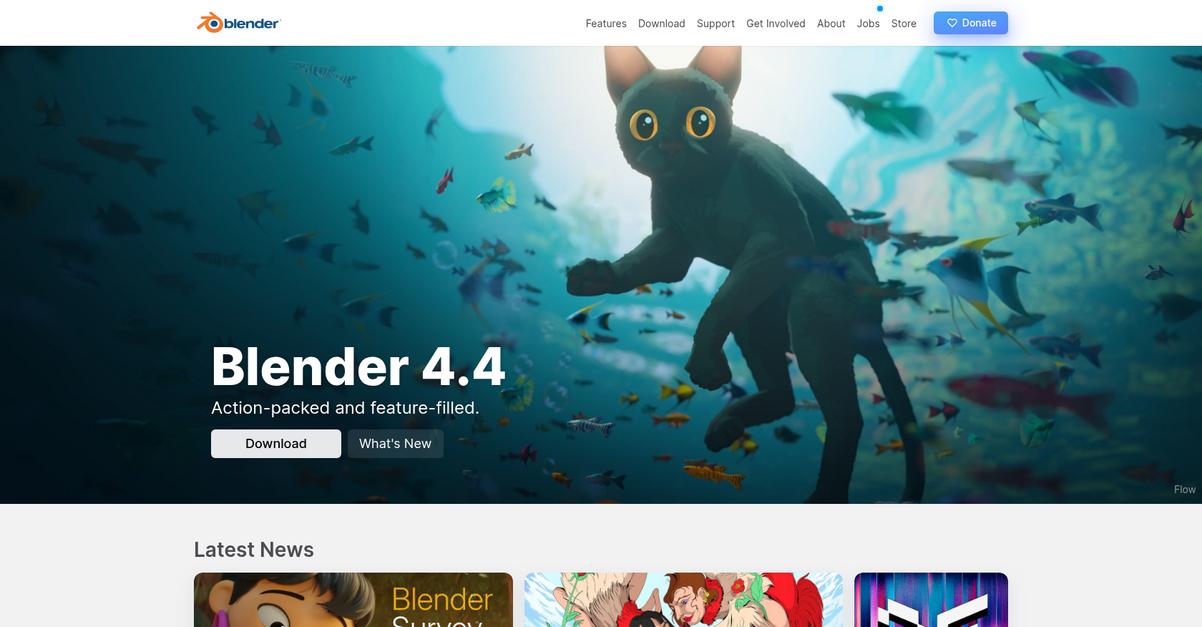
Struggling to find the right 3D rendering software?
Blender helps you tackle those challenges with a powerful, comprehensive 3D creation suite. This means you can focus on creativity, not technical hurdles.
Here’s how Blender supports your needs: it’s a free and open-source 3D creation suite, making it accessible to everyone. This addresses budget constraints while still delivering high-quality results.
The result? You achieve stunning visuals.
Blender solves the problem of balancing quality and cost for product and architectural visualizations. It handles the entire 3D pipeline, from modeling to motion tracking and video editing.
This means you get a complete solution. For instance, its robust modeling, sculpting, and UV unwrapping tools help you create detailed scenes with realistic textures effortlessly. Plus, the Cycles Render Engine and Eevee real-time renderer give you flexibility, whether you need photorealistic results or quick previews for your projects, ensuring your team maintains productivity.
You can truly focus on delivering exceptional visuals.
While we’re discussing comprehensive software solutions, understanding the benefits of a digital education platform is equally important for skill development.
Key features:
- Complete 3D pipeline: Offers modeling, sculpting, animation, simulation, rendering, compositing, and video editing, providing an all-in-one solution for your creative needs.
- Robust rendering engines: Includes Cycles for photorealistic rendering and Eevee for real-time visualization, giving you speed and quality options for any project.
- Open-source accessibility: Being free and open-source means no expensive licenses, making professional-grade tools available to every team regardless of budget.
Learn more about Blender features, pricing, & alternatives →
Verdict: Blender stands out as a strong contender for the best 3D rendering software, especially for teams seeking a powerful, cost-effective solution. Its comprehensive toolset, including the Cycles and Eevee render engines, enables you to create high-quality visualizations while keeping your budget in check, ensuring consistent output quality.
3. Chaos

Struggling with photorealism and integration in your 3D workflow?
Chaos offers visualization solutions to share ideas and optimize your creative processes. This means you can achieve unmatched realism and storytelling.
You can render in seconds without prior experience, because the UI feels familiar with tools you already know. This helps mitigate concerns about disruptive learning curves.
Want to visualize as you design?
Chaos provides industry-leading tools for architectural design, helping you shape environments and explore possibilities. You can connect Enscape to your CAD or BIM software and start rendering quickly.
V-Ray’s award-winning rendering solutions provide unmatched photorealism, built for quality and optimized for speed. Additionally, Envision allows you to assemble complex CAD scenes and create compelling presentations with real-time photorealism and advanced animations.
The result is a solution that truly empowers your creativity.
While we’re discussing powerful software, understanding database management systems is equally important for any complex digital workflow.
Key features:
- Real-time design companion: Enscape allows you to ideate, communicate, and showcase designs in real-time at every step, directly integrating with your existing CAD or BIM software.
- Industry-standard photorealistic rendering: V-Ray delivers award-winning, production-proven rendering, offering unmatched photorealism and effortless scaling across hardware configurations for high-quality visuals.
- Advanced animation and assembly: Envision helps you assemble complex CAD scenes and create compelling design presentations through real-time photorealism and advanced animation capabilities.
Learn more about Chaos features, pricing, & alternatives →
Verdict: For creative agencies and design teams seeking the best 3D rendering software, Chaos offers powerful tools like V-Ray for unmatched photorealism and Enscape for real-time design. This suite provides the comprehensive capabilities you need to deliver stunning visuals and streamline your architectural and product visualization workflows.
4. Enscape

Struggling with slow rendering and complex workflows?
Enscape offers a real-time design companion, integrating directly into your CAD tools. This means you get instant feedback, enabling faster iterations and smarter designs from concept to presentation.
You can produce fully rendered walkthrough experiences in moments, complete with dynamic lighting and natural movement, helping you engage clients and communicate ideas clearly.
This makes reaching design decisions much quicker.
Enscape solves the pain of disjointed workflows by plugging directly into your favorite design software like SketchUp, Revit, Rhino, Archicad, and Vectorworks. This allows you to focus on your design work, not on troubleshooting.
Plus, you gain access to thousands of built-in assets and materials directly within your project, ensuring seamless integration. Additionally, Enscape Premium includes powerful AI tools, Veras and AI Enhancer, for streamlined integration and faster ideation within your design workflow, helping you explore design options rapidly.
Your clients can understand and experience your vision immediately.
Key features:
- Intuitive Real-Time Visualization: Integrates directly into your modeling software for one-click visualization and instant feedback, eliminating export times and accelerating your design process.
- Integrated AI Tools: Includes Veras and AI Enhancer in Enscape Premium, providing AI-enhanced scene enrichments and accelerating design exploration directly within your CAD/BIM tools.
- Extensive Asset & Material Libraries: Offers thousands of built-in assets and materials accessible directly within your projects, simplifying the creation of photorealistic renders and immersive walkthroughs.
Learn more about Enscape features, pricing, & alternatives →
Verdict: Enscape streamlines the 3D rendering process, offering an intuitive, real-time solution for architects and designers. Its direct integration with CAD tools and AI enhancements position it as a strong contender for the best 3D rendering software, helping you save time and achieve photorealistic visuals for architectural and product design visualizations.
5. KeyShot

Struggling to bring product visions to life quickly?
KeyShot Studio offers industry-leading 3D rendering and visualization capabilities, directly addressing your need for stunning, realistic visuals. This means you can transform your product ideas into market reality.
You’ll find it empowers you to take your design to the next level, avoiding the hassle of complex setups. This allows for rapid iteration and high-quality output.
Ready to see how?
KeyShot empowers you to manage and deliver digital assets effectively for your marketing. It introduces KeyShot Hub for design review and collaboration, simplifying stakeholder feedback.
This means you can revolutionize collaboration in product design, ensuring everyone is on the same page and accelerating your workflow. Additionally, KeyShot Dock serves as a next-generation Digital Asset Management (DAM) solution.
The KeyShot Dock, an AI-powered DAM platform, prepares your team for the future by streamlining the management and delivery of your digital assets. This integration across Studio, Hub, and Dock provides a complete solution from concept to market, ensuring consistency and efficiency in your campaigns.
Achieve consistent quality and accelerated product launches.
Key features:
- 3D Rendering & Visualization: Transforms product vision into market reality with industry-leading visualization, ensuring stunning and realistic visuals for your designs.
- Design Review & Collaboration: Facilitates seamless teamwork through KeyShot Hub, enabling easy sharing of 3D scenes and tracking feedback across concept versions.
- Digital Asset Management: KeyShot Dock provides an AI-powered platform for managing and delivering digital assets, helping you scale your marketing efforts efficiently.
Learn more about KeyShot features, pricing, & alternatives →
Verdict: If you’re seeking the best 3D rendering software that supports your entire product design-to-market journey, KeyShot is a strong contender. Its integrated suite of KeyShot Studio for visualization, KeyShot Hub for collaboration, and KeyShot Dock for asset management helps transform concepts into market-ready visuals, as seen in success stories from global brands.
6. Lumion

Tired of rendering bottlenecks slowing your design process?
Lumion addresses this by fitting naturally into your creative workflow, helping you visualize designs before they are built. This means you can iterate faster, explore more options, and integrate visualization deeper into your design process, ensuring your ideas evolve effortlessly. No steep learning curve or clunky workflows here.
This allows you to quickly modify and render updates, meeting tight deadlines without compromising quality.
High-quality visualization should support your creativity.
Lumion Pro makes high-end visualization intuitive and stress-free. It turns any 3D model into an experience others can see and feel, enabling you to deliver stunning visuals. You can model and visualize simultaneously with the free LiveSync plug-in, seeing changes instantly with support for all major CAD and BIM tools. This smooth workflow ensures your design process keeps moving without disruption.
Plus, Lumion Pro offers full creative control, allowing you to dial in lighting, weather, skies, and seasons to shape the atmosphere. You can choose from ready-made styles or customize FX stacks, producing high-resolution stills, cinematic walkthroughs, and immersive 360° panoramas that speak for themselves.
The result? Fast, beautiful, and impactful presentations.
While discussing design and presentation, gaining an edge with data is key. My article on best marketing analytics tools offers valuable perspectives for your business.
Key features:
- Real-time Visualization: Lumion LiveSync plug-in allows you to model and visualize simultaneously, integrating seamlessly with major CAD and BIM tools for instant feedback.
- Extensive Asset Library: Quickly shape your scene with Lumion Pro’s rich library of high-quality assets, materials, lighting, and effects, including terrain, nature, and atmosphere.
- AI Image Upscaler: Render up to 5x faster with the new AI image upscaler in Lumion Pro 2025, producing sharper, high-resolution outputs up to 8K without sacrificing quality.
Learn more about Lumion features, pricing, & alternatives →
Verdict: Lumion Pro stands out as the best 3D rendering software for creative agencies, offering speed and intuitiveness essential for product and architectural visualizations. Its ability to render up to 5x faster with AI upscaling, combined with a smooth workflow and extensive asset library, allows your team to meet tight deadlines and maintain consistent output quality.
7. Maxwell Render

Struggling to balance photorealism with project deadlines?
Maxwell Render provides a solution for 3D designers and marketing teams, addressing your need for high-quality visuals without compromising speed.
Its re-written multi-GPU core means you can achieve final results in minutes and accurate previews in seconds. This translates to quicker iterations and less waiting for your team.
Time to deliver stunning visuals.
Maxwell Render solves the problem of slow rendering times, which can be a significant pain point for creative agencies. With its updated GPU engine, it delivers impressive speed while maintaining physical accuracy.
You’ll find Maxwell Render integrates with popular platforms like SketchUp, Cinema 4D, 3ds Max, and ArchiCAD, simplifying your workflow. This compatibility helps avoid disruptive learning curves and ensures smooth migration from existing tools.
Additionally, Maxwell Render maintains its commitment to developing the most accurate render engine on the market. This dedication to precision ensures your architectural visualizations and product designs achieve the photorealism clients expect, consistently delivering high-quality output across campaigns.
Get ready for exceptional rendering.
While discussing product visuals, understanding how to manage product information efficiently is key. My article on best PIM software offers valuable insights.
Key features:
- Multi-GPU core: Delivers final renders in minutes and accurate previews in seconds, ensuring your projects stay on schedule and your team remains productive.
- Seamless integration: Supports popular modeling platforms like Cinema 4D, SketchUp, and 3ds Max, simplifying workflow migration and reducing compatibility concerns.
- Physical accuracy: Prioritizes photorealistic quality, allowing you to achieve stunning visuals for architectural and product visualizations without sacrificing speed.
Learn more about Maxwell Render features, pricing, & alternatives →
Verdict: If you prioritize both rendering speed and photorealistic quality, Maxwell Render emerges as a strong contender for the best 3D rendering software. Its multi-GPU core ensures quick turnarounds, while deep integrations with software like Cinema 4D and SketchUp streamline your workflow, enabling consistent, high-quality output.
8. OTOY

Struggling with slow rendering and complex workflows?
OTOY offers OctaneRender, the fastest unbiased GPU renderer. This means you can create stunning visuals in a fraction of the time, allowing your team to meet tight project deadlines and deliver high-quality product and architectural visualizations faster.
This simplifies the process of creating visuals that align with your project demands.
Here’s how OTOY streamlines your rendering process.
OctaneRender for Unity integrates path-tracing directly into the game engine, simplifying workflow integration. This allows your team to maintain productivity without disruptive learning curves when working with existing modeling platforms.
Additionally, OctaneRender Cloud provides unlimited, scalable GPU rendering power through the cloud, ensuring consistent output quality across campaigns. Plus, OTOY’s Lightstage technology digitally captures human faces with unparalleled accuracy, crucial for realistic character rendering in your projects. The result is consistently high-quality visuals.
If you’re also looking into business solutions, my article on best Cloud Contact Center Solutions can help boost your customer experience.
Key features:
- Fast GPU Rendering: OctaneRender is the fastest unbiased GPU renderer, allowing you to produce visuals in significantly less time than traditional methods, addressing your need for speed.
- Cloud Scalability: OctaneRender Cloud provides unlimited, scalable GPU rendering power, ensuring you can handle demanding projects and large workloads without compromising performance.
- Workflow Integration: OctaneRender for Unity brings path-tracing directly into the game engine, providing seamless integration with existing tools and reducing workflow disruption.
Learn more about OTOY features, pricing, & alternatives →
Verdict: If your creative agency prioritizes speed and photorealism, OTOY’s OctaneRender makes a strong case as the best 3D rendering software. Its GPU-accelerated rendering and cloud scalability address the need for faster project turnaround, ensuring teams can produce high-quality visuals efficiently.
9. SketchUp
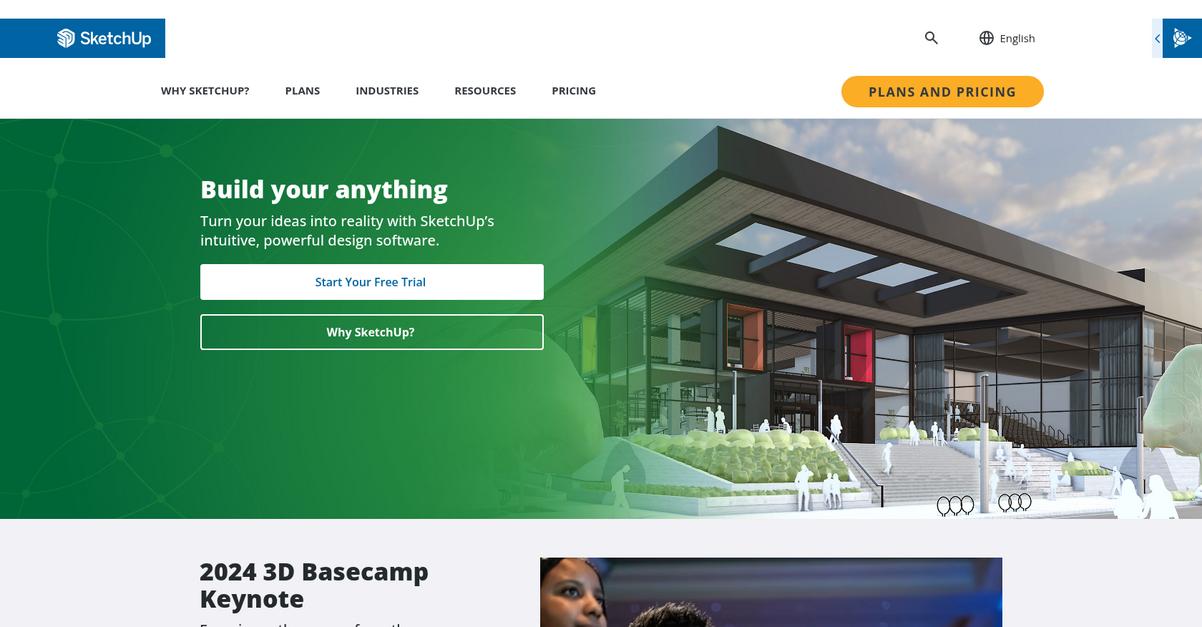
Struggling to visualize your creative designs effectively?
SketchUp helps you compose stunning, photorealistic visuals in real-time, allowing you to give life to your wildest concepts. This means you can swiftly turn ideas into reality with powerful, intuitive design software.
You can also use simple 3D drawing tools to build dynamic models and express yourself. This ensures you win over clients with standout presentations.
Here’s how you can achieve consistent, high-quality output.
SketchUp allows you to model across devices, so you choose how and where to work, bringing everyone together to refine designs and drive innovation forward. This means you can create across devices and jet set – or jet home – with every file you need.
You can gain immediate input on your design to progress your work forward, helping you find solutions with speed and flexibility. Additionally, you can size up real-life design scenarios to find the perfect workflow for your next project. Plus, you can explore the interface from the basics to advanced workflows, ensuring you can spark new insights.
The result is a streamlined workflow, reduced time-to-market, and future-proofed designs.
Key features:
- Intuitive 3D modeling: Empower your creativity by giving life to your wildest concepts and effortlessly realizing your vision with powerful design software.
- Photorealistic visualization: Compose stunning, photorealistic visuals in real-time, enabling you to picture your designs clearly and present them effectively.
- Multiplatform collaboration: Work and communicate across devices to refine designs, build consensus, and drive innovation forward with your entire team.
Learn more about SketchUp features, pricing, & alternatives →
Verdict: SketchUp is a compelling choice if you’re seeking the best 3D rendering software to achieve photorealistic visuals and seamless collaboration. It helps your teams maintain productivity, reduce time-to-market for product launches, and future-proof workflows, as demonstrated by the 50% reduction in construction time for one customer.
10. Unreal Engine

Struggling with complex rendering tools for stunning visuals?
Unreal Engine helps you create photorealistic visuals and immersive experiences, simplifying workflows. This means you can focus on creativity, not technical hurdles.
It’s clear that Unreal Engine simplifies your rendering pipeline, freeing up time for iteration and innovation.
Ready for a better rendering experience?
Unreal Engine empowers your team to deliver incredible results. It enables you to bring your creative visions to life with advanced rendering capabilities.
This helps you achieve a high level of detail and realism, making your product and architectural visualizations truly stand out. You can integrate your existing assets and workflows easily.
Additionally, Unreal Engine’s capabilities extend to virtual production, interactive experiences, and high-fidelity simulations, ensuring your projects are future-proofed. This versatility allows your team to tackle diverse projects with confidence, from marketing campaigns to interactive product configurators.
Your visual projects can truly shine.
Speaking of efficient operations and supporting your team, you might find my guide on best virtual PBX systems helpful for optimizing communication.
Key features:
- Photorealistic rendering: Delivers stunning, high-fidelity visuals perfect for product visualization and architectural renders, reducing iteration time.
- Workflow integration: Connects with your existing tools and assets, ensuring a smooth transition and enhanced productivity for your creative team.
- Interactive experiences: Enables the creation of engaging virtual tours and simulations, adding depth and interactivity to your visual presentations.
Learn more about Unreal Engine features, pricing, & alternatives →
Verdict: Unreal Engine is a strong contender for the best 3D rendering software, especially if you need to create photorealistic visuals and interactive experiences. Its capabilities ensure your marketing and design teams can achieve high-quality output while reducing complexity, helping you deliver consistent results and reduce time-to-market for launches.
Conclusion
Still waiting on slow renders?
Choosing the right software is overwhelming. It’s a challenge to balance photorealism, speed, and budget without getting lost in technical specs.
Vendor benchmarking reports show companies with optimized software achieve 45% faster rendering times. That’s a huge competitive advantage, which also leads to a 31% reduction in overall production costs.
So, what’s the right move?
From my review, Autodesk is the definitive top solution. It excels at connecting your teams, data, and workflows for faster, more realistic results.
I really appreciate how it simplifies complex projects without compromising artistic vision. Choosing the best 3D rendering software like this ensures your entire creative pipeline is future-proof.
Speaking of future-proof creative pipelines, for immersive experiences, my guide on best VR software provides valuable insights.
I recommend you start a free trial of Autodesk to see how its integrated tools can transform your workflow.
Deliver stunning visuals without the wait.




